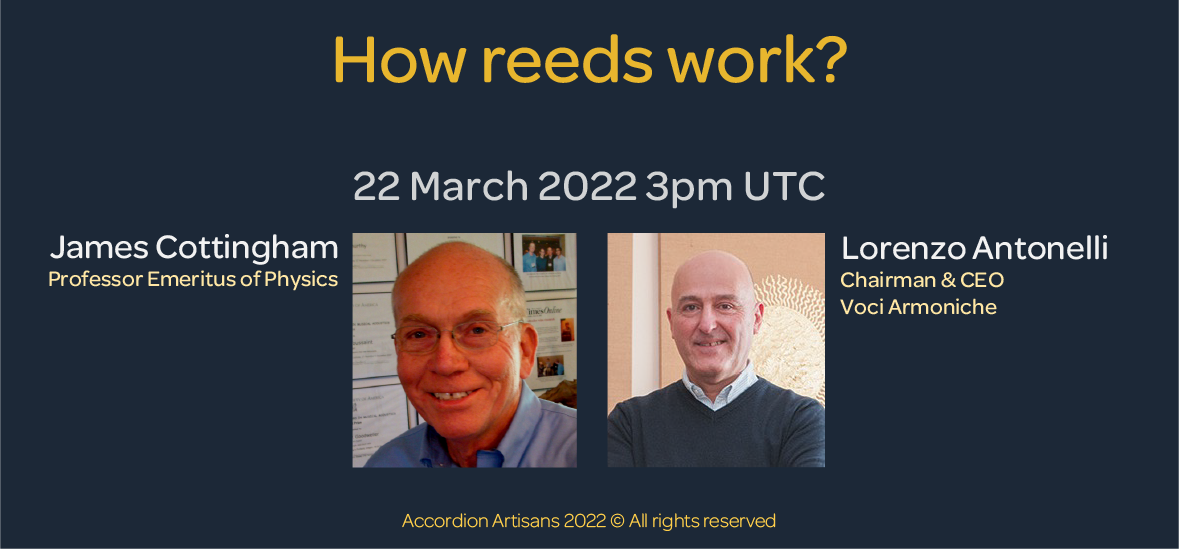
Welcome! You are invited to join a meeting: Accordion Artisans - How reeds work?. After registering, you will receive a confirmation email about joining the meeting.
Online webinar series James Cottingham - Acoustical research on the accordion reed: What can we learn and what we would like to know? Lorenzo Antonelli - New paradigms of acoustic quality for reeds
Topic
Accordion Artisans - How reeds work?
Description
Online webinar series
James Cottingham - Acoustical research on the accordion reed:
What can we learn and what we would like to know?
Lorenzo Antonelli - New paradigms of acoustic quality for reeds
Time
Mar 22, 2022 03:00 PM in Universal Time UTC
